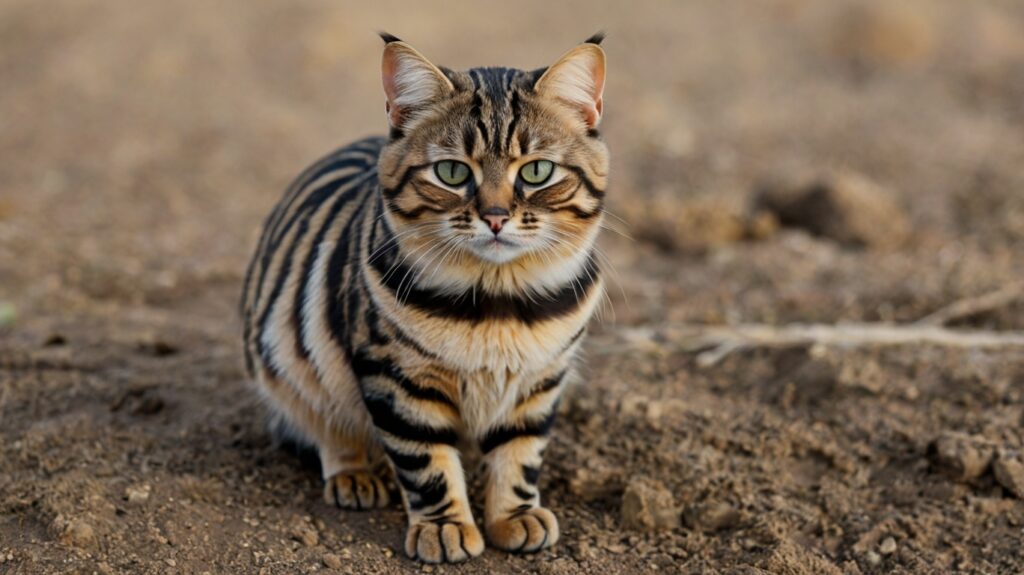Table of Contents
- Introduction
- Physical Characteristics
- Habitat and Distribution
- Behavior and Hunting Techniques
- Diet and Prey
- Reproduction and Lifespan
- Conservation Status and Threats
- Conclusion
- FAQs
Introduction
The Black-Footed Cat (Felis nigripes), also known as the small-spotted cat, is Africa’s smallest and one of the deadliest wild cats. Despite its tiny size, this nocturnal predator has an astonishingly high hunting success rate, making it a fascinating subject for wildlife enthusiasts and researchers. This article explores its unique characteristics, behavior, habitat, and conservation status.

Physical Characteristics
The Black-Footed Cat is the smallest wild cat in Africa, weighing only 1.5–2.5 kg (3.3–5.5 lbs) and measuring 36–52 cm (14–20 in) in body length. Key features include:
- Distinctive black soles on its feet (hence the name).
- Golden-brown fur with dark spots and stripes.
- Large eyes adapted for nocturnal hunting.
- Short tail with black rings.
Habitat and Distribution
This elusive feline inhabits arid regions of Southern Africa, including:
- South Africa
- Namibia
- Botswana
- Zimbabwe
It prefers open savannas, grasslands, and semi-desert areas with minimal human disturbance.
Behavior and Hunting Techniques
The Black-Footed Cat is a solitary and highly territorial hunter. Its behavior includes:
- Nocturnal activity (hunting at night).
- Extreme stealth—approaching prey silently before pouncing.
- High success rate (60% of hunts end in a kill, one of the highest among wild cats).
- Burrow-dwelling—often using abandoned termite mounds or dens for shelter.
Diet and Prey
Despite its small size, this cat is a voracious predator, consuming:
- Rodents (40% of diet)
- Birds
- Insects
- Small reptiles
It needs to eat 20% of its body weight daily, hunting up to 14 prey items per night.
Reproduction and Lifespan
- Breeding season: August–December.
- Gestation: 63–68 days.
- Litter size: 1–4 kittens.
- Lifespan: Up to 13 years in captivity, shorter in the wild due to predation.
Conservation Status and Threats
The Black-Footed Cat is classified as Vulnerable by the IUCN due to:
- Habitat loss from agriculture.
- Poisoning (secondary rodenticide exposure).
- Predation by larger animals.
Conservation efforts include captive breeding programs and habitat protection.
Conclusion
The Black-Footed Cat is a remarkable yet vulnerable species, showcasing nature’s efficiency in a small package. Protecting its habitat and raising awareness are crucial to ensuring its survival in the wild.
FAQs
1. Why is it called the Black-Footed Cat?
It has distinctive black soles on its feet, which differentiate it from other small wild cats.
2. How dangerous is the Black-Footed Cat to humans?
Not dangerous—it avoids humans and is too small to pose any threat.
3. What makes it such a successful hunter?
Its stealth, agility, and high metabolism drive it to hunt frequently with precision.
4. How many Black-Footed Cats are left in the wild?
Estimates suggest fewer than 10,000 mature individuals, with declining populations.
5. Can Black-Footed Cats be kept as pets?
No, they are wild animals and require specific conditions not suitable for domestication.
